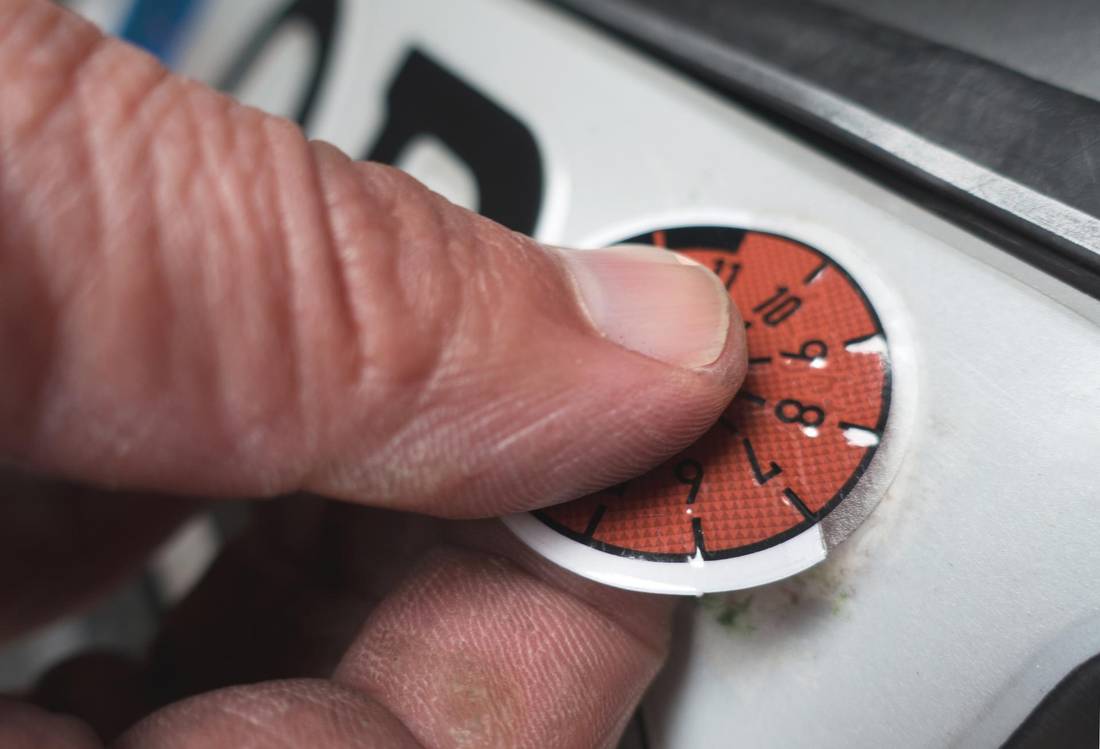In the winter months, the dead summer flowers are dry and dead in the flower beds. The seeds are food for the winter birds and the autumn leaves are still there to protect the roots of the perennials against frost. In the bare and arid winter garden, the Helleborus (Christmas rose / winter rose or spring rose) starts to flower from January and gives a cheerful face to the still dormant winter garden. The plant with large and saucer-shaped flowers can originally withstand low temperatures and survives frost and snow.
- The genus Helleborus
- The Helleborus niger (Christmas or winter rose)
- The Helleborus orientalis (spring rose)
- The hybrid Helleborus niger and Helleborus orientalis
- Location Helleborus
- The leaves of the native Helleborus niger and Helleborus orientalis versus the cultivars
- Frost and leaves of Helleborus
- Black spots on the leaves
- The Helleboris is poisonous
- The flower of Helleborus niger and Helleborus orientalis
- Pollination Helleborus
The genus Helleborus
The genus Helleborus (hellebore) is related to the Ranunculaceae (buttercup family). The hellebore genus (Helleborus) consists of 15 to 22 species. The genus includes:
- the smelly hellebore (Helleborus foetidus). The plant is found in the wild in the area of the mountain forests in the Western Alps. In the Netherlands and Belgium, the wild plant has occasionally been found in calcareous areas;
- the tart root (Helleborus viridis). The plant is native to the mountain forests of Central Europe at an altitude of 1800 meters. In the south of Belgium the tart root is rare and in the Netherlands the plant is very rare. It is found in the wild in places where the tart root was previously cultivated;
- the Christmas rose (Helleborus niger). The plant is rare and occurs occasionally in the wild in the Netherlands and Belgium in places where they used to be cultivated.
- the spring rose (Helleborus orientalis). The plant is distributed in the wild from Bulgaria, Northeast Greece and the Caucasus in places up to an altitude of 2000 meters. The plant is rare in the Netherlands and Belgium and occurs occasionally in the wild in places where it used to be cultivated.
The Helleborus niger (Christmas or winter rose)
The species Helleborus niger originates in the wild in the calcareous mountain areas with coniferous forests of the Eastern Alps and the Northern Apennines in Europe, at altitudes up to 1900 meters. There it occurs in undergrowth and on forest edges, in grassy places in heavy soil. Older roots of the native Helleborus niger are often black, which is what Helleborus niger is named after. The native Christmas rose originally does not flower at Christmas, but in January / February with large white flowers. The Christmas rose that we can buy in the shops at Christmas is a consciously cultivated plant with the aim that the plant will flower around Christmas (including the Helleborus niger Christmas Carol). The white flowers of the Christmas rose Helleborus niger often turn pink and green.
The Helleborus orientalis (spring rose)
Helleborus orientalis originates from areas more to the east than Helleborus niger. From the mountainous regions of Greece, Bulgaria and Turkey to Central Asia where they grow in forests, scrubland and clearings to heights of 2000 meters. Most varieties of Helleborus orientalis flower from February and are also called spring rose.
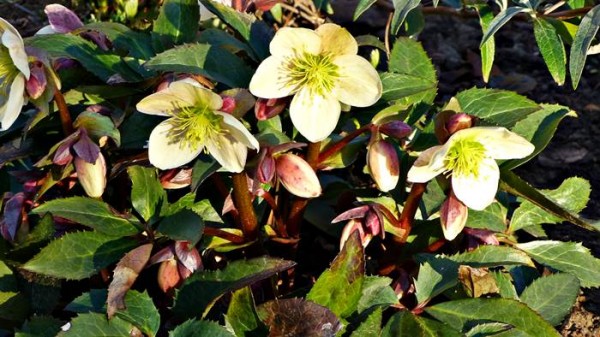
The hybrid Helleborus niger and Helleborus orientalis
The botanical Christmas rose Helleborus niger has been cultivated for centuries and the name Christmas rose actually mainly refers to the Helleborus niger that used to be brought forward in greenhouses to bring them into bloom around Christmas. In the 21st century, more and more new hybrids of Helleborus orientalis appear with colors up to black, buttercup yellow or pink with double petals. Helleborus niger and Helleborus orientalis are easy to grow. The cultivated Helleborus orientalis is an easy plant to keep well in the garden.
Different hybrid varieties of Helleborus
Helleborus orientalis is mainly cultivated for its color. The color range is of red, black, pink, apricot, and yellow with all variations possible, such as with speckled or striped flowers. The stem is long-stalked and the leathery leaves are fan-shaped or split-shaped with a single-serrated edge or double-serrated edge. Several beautiful Helleborus orientalis plants can add color to the winter garden and bloom from late winter until well into spring. They are therefore also called the spring rose. Among others there are the hybrids:
- Helleborus orientalis ‘Blue Lady’. A 40 to 50 centimeter high plant with black flowering flowers in February, March and April;
- Helleborus orientalis ‘Spotted Hybrids’. A 30 centimeter high plant with different flower colors and dots in February to April;
- Helleborus orientalis ‘Black Petticoat’. The cultivated Helleborus with black flowers blooms from February to mid-April with a height of 30 centimeters;
- Helleborus ‘Sensas’. A spontaneous cross between Helleborus orientalis abchasicus and Helleborus niger Macranthus. The low plant with a height of up to 25 centimeters blooms with pink flowers from February to May;
- Helleborus hybridus ‘Charmer’. The large, extremely floriferous plant with dark pink-red flowers. The flowers bloom from February to March with a height of 30 centimeters.
Location Helleborus
The Helleborus likes a humus-rich, moisture-retaining but well-drained soil. A place not constantly in full sun but where there is shade in time and not too much wind. Give the Helleborus a handful of good, lime-rich compost every year.
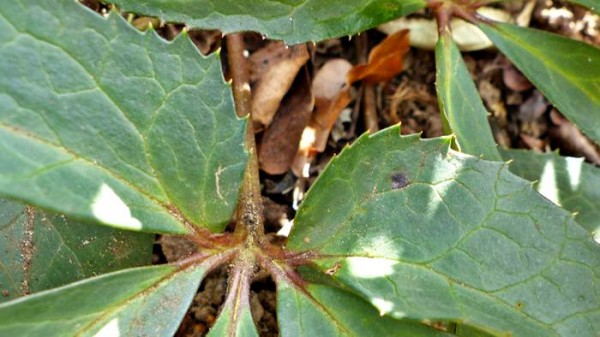
The leaves of the native Helleborus niger and Helleborus orientalis versus the cultivars
The five to ten green leathery leaf segments of the native Helleborus niger and Helleborus orientalis converge at the base to form one palmate leaf on a red speckled petiole. The many cultivated varieties (the cultivars) Helleborus also have leathery leaves and are usually divided into three to more leaves at the base. The leaf can be veined with deep pink veins, which turn silvery in summer, marbled or, like the ancestors of the Helleborus, green. The leaf margin of the native Helleborus has sharp protrusions and blunt incisions (serrated). The leaf of the cultivar Helleborus is often completely serrated or only serrated at the top. Sometimes the Helleborus is grown without leaves (Helleborus Verboom Beauty). The leaves of the native Helleborus niger and Helleborus orientalis remain green in winter, as do the leaves of most cultivars. The new leaves appear along with the flower stems.
Frost and leaves of Helleborus
The hybrid Helleborus niger and Helleborus orientalis can protect themselves against frost (just like the native Helleborus). If it comes to night frost in winter or early spring, the flowering Helleborus stores the moisture from the flowers in the leathery leaves and in the roots. The flowers hang limply, but as soon as there is no more night frost, moisture is again transported to the flowers and they stand upright again.
Black spots on the leaves
The leaves of the Helleborus can give black spots. It is a fungus that causes the black spot disease. Spores of the fungus are spread by splashing rain. To counter this, it is best to cut the affected leaves in November. Helleborus produces new leaves towards the end of flowering. Use gardening gloves when cutting the leaves, as Helleborus is poisonous.
The Helleboris is poisonous
All parts of the Helleborus are slightly poisonous. Helleborus is also named after the Greek hellein what ?? to kill ?? and bora means what ?? food ?? means. The Helleborus contains the substance diglycoside, including hellebrine. Hellebrine can locally irritate the skin and mucous membranes and the seeds can cause itching and pain in the fingers when harvested. Furthermore, the plant, like so many species of the buttercup family, contains the natural substance saponin against insect damage and protoanemonin.
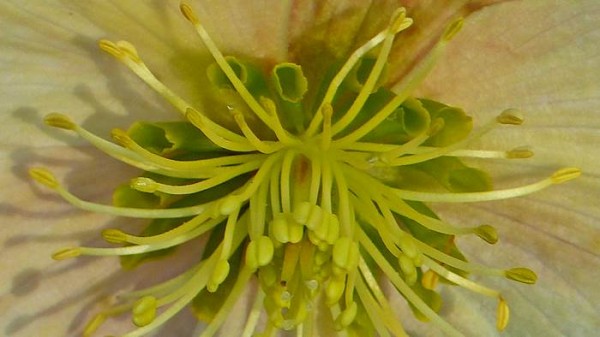 Helleborus with funnel-shaped green petals with nectar.
Helleborus with funnel-shaped green petals with nectar.The flower of Helleborus niger and Helleborus orientalis
Helleborus niger (except for the specially cultivated Helleborus for Christmas) and Helleborus orientalis bloom in January or early February and bloom until April with saucer-shaped flowers. The flower of Helleborus orientalis flowers a little later. The five petals are on average between four and eight centimeters. The petals of the Helleborus are actually the sepals (the outside of the flower) and the petals (petals) are the green funnel-shaped pipes in the heart of the flower. The petals have a lot of nectar and grow around the yellow stamens with the stamp in the middle of the stamens. Six to tens of stamens will eventually form the tube fruits with the seeds in them. The seeds need a cold stimulus to germinate. These seedlings often have a different color from the mother plant. It takes two to three years for seedlings to flower. The tearing of an adult plant in August / September is faster and produces an identical plant to the mother plant.
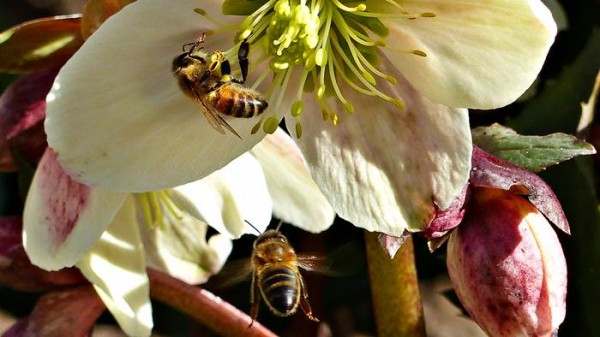
Pollination Helleborus
The Helleborus can fertilize the flower with the pollen by landing on the stamp of the same flower (self-pollination). The first honeybees and bumblebees, which wake up from hibernation, transfer the pollen from one plant to the stigma of another (cross-pollination). Bees and / or bumblebees are attracted to the nectar in the green pipes (petals). Special nectar yeast ensures that the nectar in the flower is 6 degrees warmer than the ambient air. In nature, yeasts occur in sugar-rich liquid, including the nectar of Helleborus. The nectar yeast can be compared to the yeast in wine and beer, which converts glucose into alcohol and carbon dioxide and releases heat. What causes the heat with nectar yeast is not yet clear in 2019.




